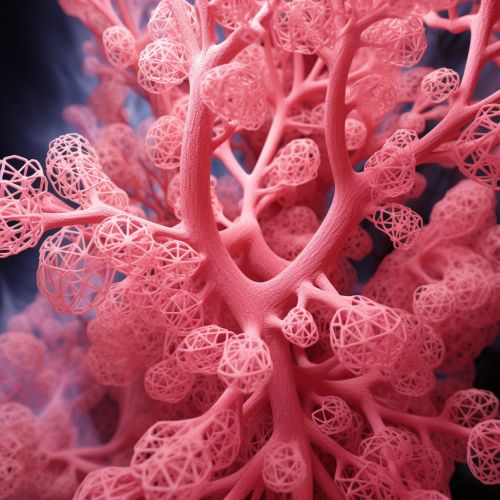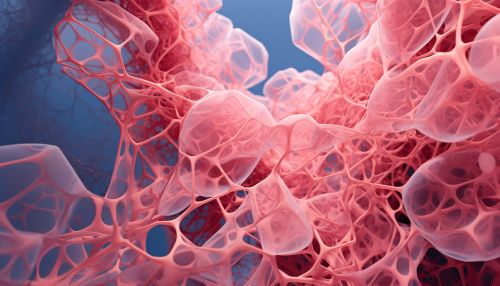Alveoli
Anatomy and Structure
The lungs are a pair of spongy, air-filled organs located on either side of the chest (thorax). The intricate internal structure of the lungs is tuned to their main function of gas exchange. The primary functional units of the lungs where the actual gas exchange takes place are the alveoli. The alveoli are tiny sac-like structures present in clusters at the end of the bronchial tree in the lungs.


Each lung houses hundreds of millions of alveoli, and their combined surface area in an adult human is nearly 75 square meters, roughly the same area as a tennis court. The walls of the alveoli are extremely thin (about 0.2 micrometers), allowing for the rapid exchange of gases with the blood.
Gas Exchange
The primary function of the alveoli is to exchange oxygen and carbon dioxide molecules to and from the bloodstream. This process, known as respiration, is essential for sustaining life.
The alveoli are surrounded by a dense network of tiny blood vessels called capillaries. The walls of the alveoli and the capillaries are very thin and semi-permeable, allowing gases to pass through them. Oxygen from the inhaled air diffuses through the alveolar and capillary walls into the blood, while carbon dioxide, a waste product of metabolism, diffuses from the blood into the alveoli and is then exhaled.
Alveolar Cells
There are three types of cells in the alveoli: type I alveolar cells, type II alveolar cells, and alveolar macrophages.
Type I alveolar cells are thin and flat, and they line the alveolar walls. These cells are involved in the process of gas exchange between the alveoli and the blood.
Type II alveolar cells, also known as surfactant-producing cells, are more numerous than type I cells but do not cover as much surface area. They secrete a fluid containing surfactant, a substance that reduces surface tension within the alveoli and prevents them from collapsing.
Alveolar macrophages, also known as dust cells, are immune cells that engulf and digest foreign particles and bacteria that enter the alveoli, thereby preventing infections.
Alveolar Diseases
Several diseases and conditions can affect the alveoli, including pneumonia, pulmonary edema, acute respiratory distress syndrome, and chronic obstructive pulmonary disease.
Pneumonia is an infection that inflames the alveoli, causing them to fill with fluid or pus. Pulmonary edema is a condition in which fluid accumulates in the alveoli, often as a result of heart disease. Acute respiratory distress syndrome is a severe lung condition that causes low oxygen levels in the blood. It occurs when fluid builds up in the alveoli, preventing them from filling with enough air. Chronic obstructive pulmonary disease is a group of lung diseases that block airflow and make it difficult to breathe.
